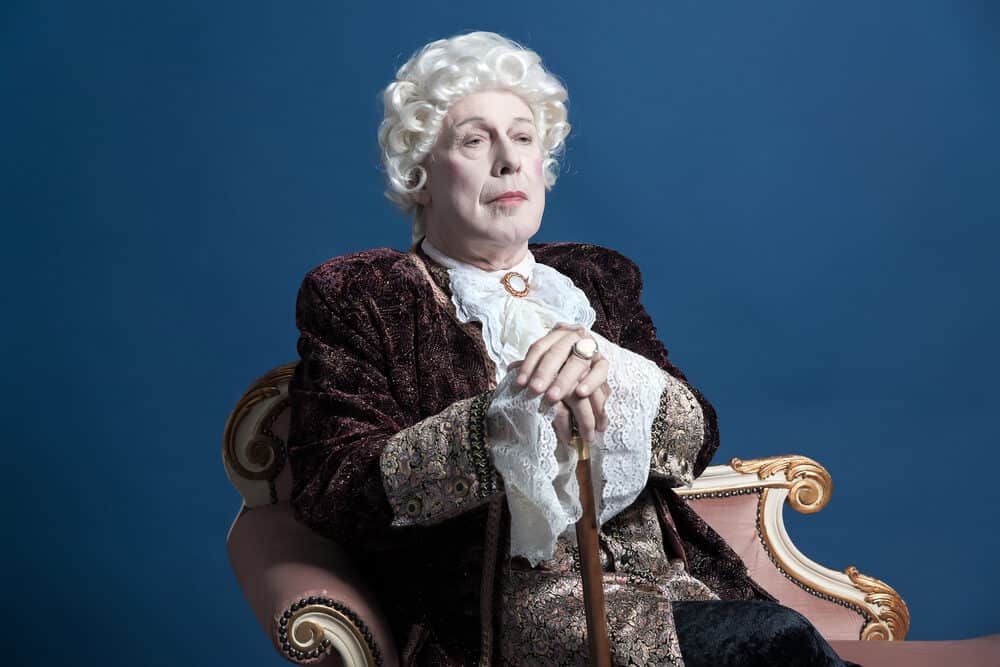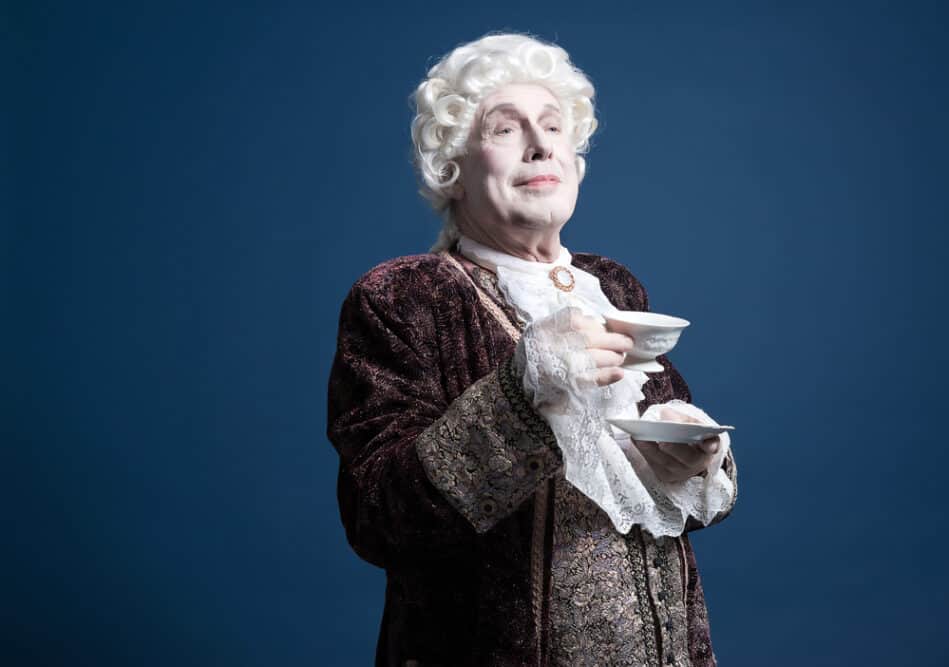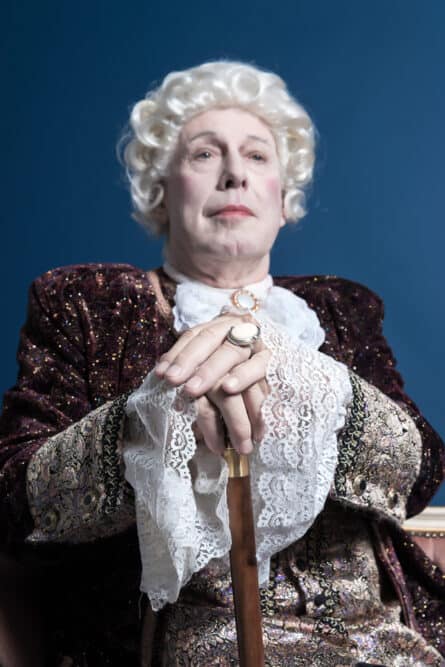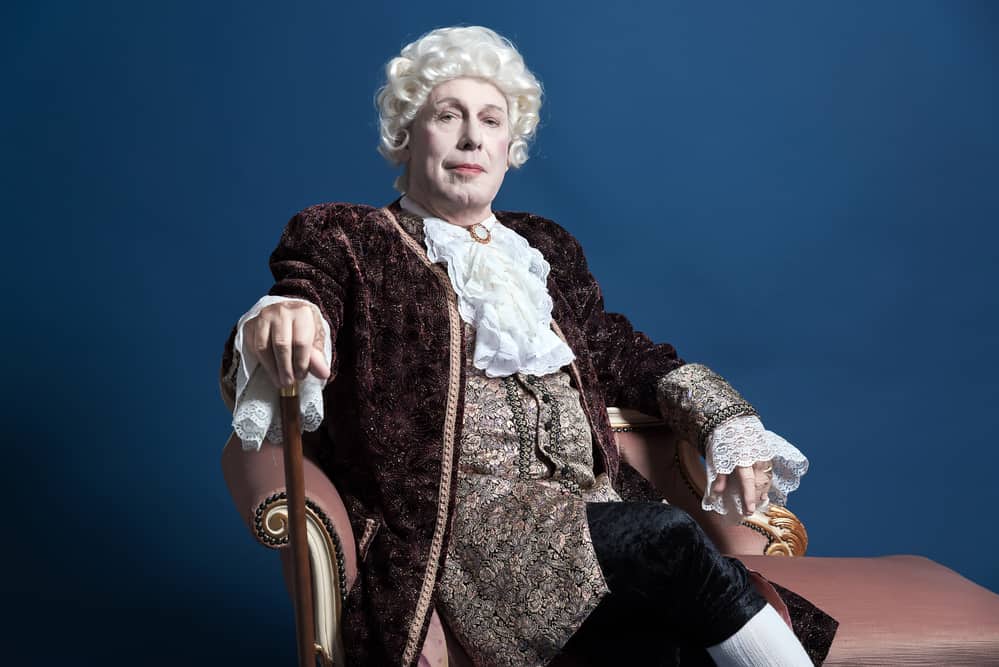
When you look at portraits of Louis the Great, Alexander Hamilton, King Charles II, or prominent figures in history books, you can’t help but notice the fluffy curls draping their shoulders.
These powdered wigs have a very distinctive look that begs the question, “why did people wear powdered wigs?”
This article will explore why people wore powdered wigs during the 17th and 18th centuries and how wearing wigs eventually went out of fashion.
Table of Contents
Why Did People Wear Powdered Wigs?
Historians point to syphilis as one of the main reasons wigs started to become popular. Syphilis, a dangerous STI, began to spread in Europe in the late 1490s.
By the late 16th century, the disease had reached epidemic levels in Europe and was incurable. One of the main symptoms of the disease is patchy hair loss, so Europeans resorted to wigs to hide these patches caused by the illness.
Why People Used Wig Powder
Head lice was a huge problem when it came to wearing wigs, and the only realistic solution for many was to stop wearing them. But most Europeans did not want to get rid of their wigs, so they searched for a solution - the solution, of course, was powder.
It was thought that adding powder to the wigs would improve the lice problem.
It was also challenging to maintain wigs with their foul smell, so the powder was scented with roots and flowers to help mask the stench of wigs.
The Powdered Wig Trend
Originally called “periwigs,” powdered wigs grew in popularity in the mid-17th century when King Louis XIII started to go bald at 17 years old.
As he and his father, Henry IV of France, wore wigs more often, Europeans began to copy the style. The same thing happens today when a celebrity makes a certain fashion or lifestyle choice.
Powdered Wigs Symbolized Status

Colonial America focused intently on class distinction, and clothing and wigs were the two major possessions that denoted class differences. Throughout the 18th century, men wore powdered wigs to display class status - they were often used to indicate wealth.
For a while, powdered wigs were only worn by the upper class. But as decades passed, wigs became more common among other classes.
Judges, military officers, and others who worked in the legal profession typically wore white wigs. Men in the trade profession wore brown wigs, and men with professional occupations of higher status typically wore gray wigs.
Powdered wigs eventually grew a strong association with royalty in France, which became so in other countries soon after.
Men Wore Powdered Wigs for Sophistication
Fashion trends during the 18th century dictated whether you were a part of the higher or lower class, and those who were part of the higher class strived to seem older and more sophisticated.
Powdered wigs helped accomplish this goal for men. Husbands were more likely to be older than their spouses, so they wore wigs and intricate clothing to make themselves look even older.
White became the most popular hair powder shade because it worked well for people with lighter hair shades. It also gave darker hair a grayer appearance, another common feature of the more “mature” look for men.
Wigs for Different Occasions
Men wore different styles of wigs for various occasions. There were powdered wigs for casual wear, dinners out with family, and even horseback riding.
Powdered wigs became more formal by the late 1700s, and many professionals wore them as part of their uniforms.
Bishops of the Church of England, for example, would wear long ceremonial powdered wigs. A judge’s wig for the courtroom was as short as a barrister’s wig, except for judges - their wigs were neater and more decorated.

Powdered Wigs Inspired Military Wigs
During the late 17th century, officers wore wigs as part of their uniforms. Military officers at the time typically wore their hair under their powdered wig, but this became a problem when military personnel realized that this was not attainable for the rank of the infantry.
When the powdered wig trend shifted to shorter styles, officers adopted shorter looks.
In lieu of wigs, men would grow out their hair and trim it to a short length; British military fashion rules did not permit long hair.
The British soldiers would style their hair by using beef tallow or fat from other animals to grease their hair. The grease helped them style their pigtails and made it easier to tie their hair back and make it appear shorter.
Later that century, more people began to wear their hair greased and tied back.
Wigs Were Not Just for Men
Even though pictures of these powdered wigs were more often seen in men’s fashion, wigs were worn by women by the late 18th century. Some of the reasons men wore these wigs also apply to women, especially when covering up evidence of syphilis.
Hair powder was trendy because it enabled women to add blue and violet shades to their wigs. Women’s wigs also included hairpieces and other accessories like jewelry, stones, and flowers, which ultimately made their wigs very heavy.
When Did Powdered Wigs Go Out of Fashion?
Wigs started to go out of fashion in the late 18th century. Here are a few reasons why:
- Financial barrier. A tax on hair powder was introduced in 1795 by William Pitt the Younger to fund the Napoleonic wars with France. As a result of this tax, wigs became more expensive, and fewer people were interested in buying them, causing the wig fashion trend to decline over time.
- Wigs were uncomfortable. Short, natural hair became more highly desired for men in Europe and other parts of the world. Wigs were very hot, heavy, and high-maintenance, so soldiers eventually decided to forgo the style and sport simpler, more natural styles.
- A disdain for the British. Also, wigs were closely linked to Britain's monarchy, causing colonial men to wear their hair naturally to distance themselves from anything remotely similar to the British.

How Wearing Wigs Has Changed Over Time
Even though full wigs in the 19th and 20th centuries were not fashionable, British judges and barristers continued wearing them until the early 2000s.
Women's wigs, however, developed differently. In the 1800s, a hairpiece known as a postiche became a staple in the average woman’s hairstyle repertoire.
Derived from the French word meaning “added hair,” postiches were ideal for women who were experiencing hair thinning or just wanted to make their hair look fuller.
They are not exactly the same as wigs. In fact, they are much like what we know today as
About a century after the rise in postiches, bobbed hairstyles became a favored look for women. With this trending hairstyle, postiches and wigs declined in popularity temporarily.
It wasn’t until the 1950s that wigs came back in style, and manufacturers began to use wig-making machines instead of making them by hand with advanced technology.
We don’t see many powdered wigs today, but we often see actors wear wigs in film and theater in the United States and other parts of the world. They are also frequently worn during Halloween as a part of costumes.
But most notably, these hairpieces have become a way for people to express themselves or hide imperfections in their natural hair (hair loss, balding, etc.). Their aesthetic has really come a long way, so it can be nearly impossible to tell whether someone is wearing a wig.
- How Much Does a Good Wig Cost?
- Who Created Wigs?
- Can Horsehair Be Used for Wigs?
- Can You Wash a Wig With Regular Shampoo?
Even though powdered wigs are not nearly as prevalent as they used to be, fashion trends are always cyclical. Who knows? Maybe we will see the powdered wig trend come back in the future. The chances are slim, but only time will tell!




